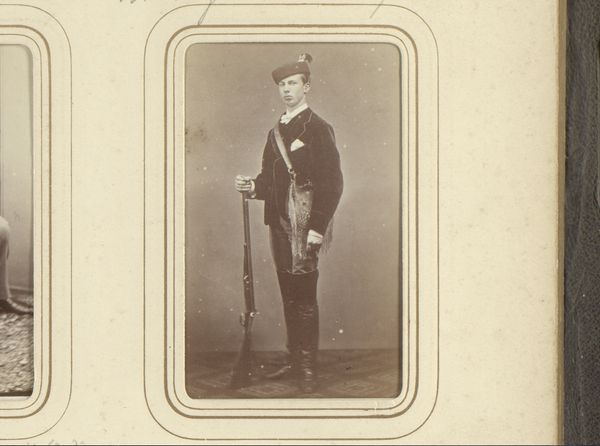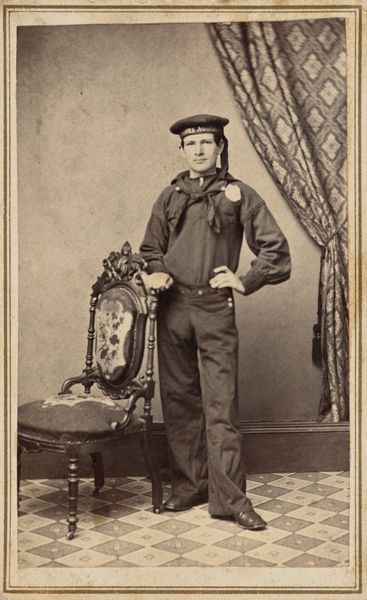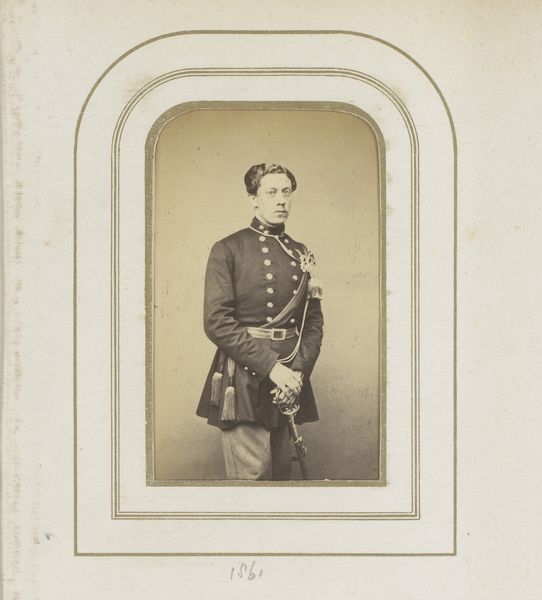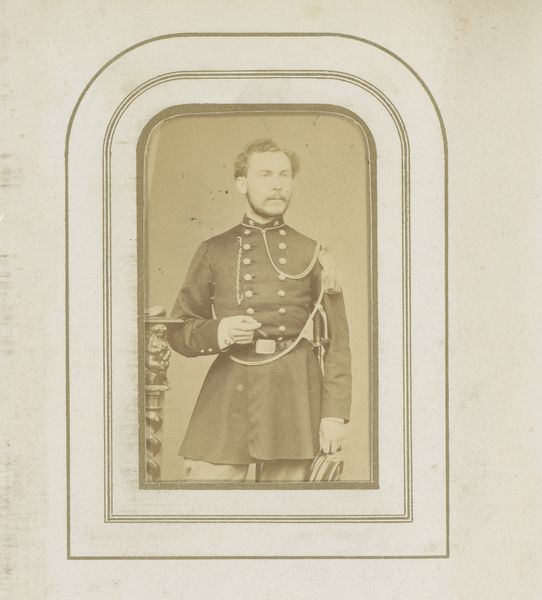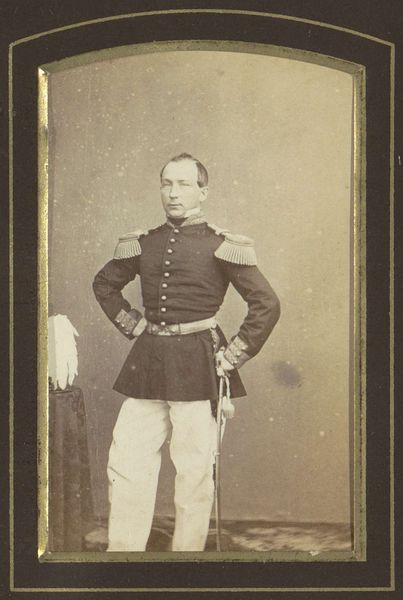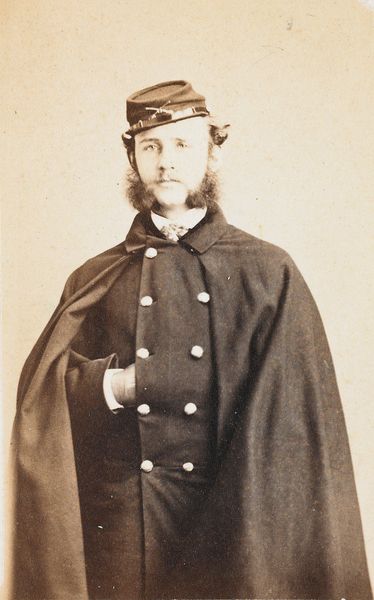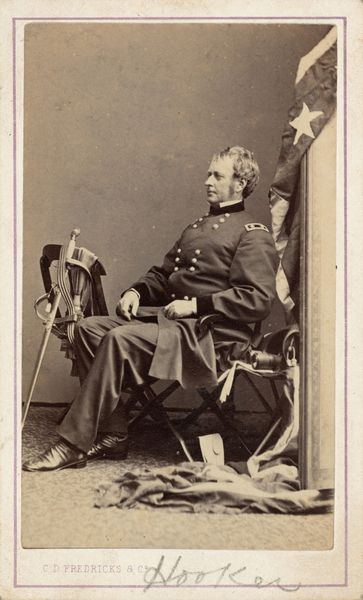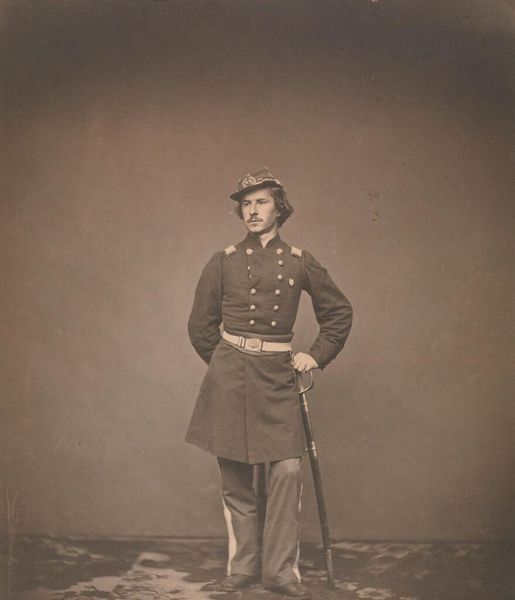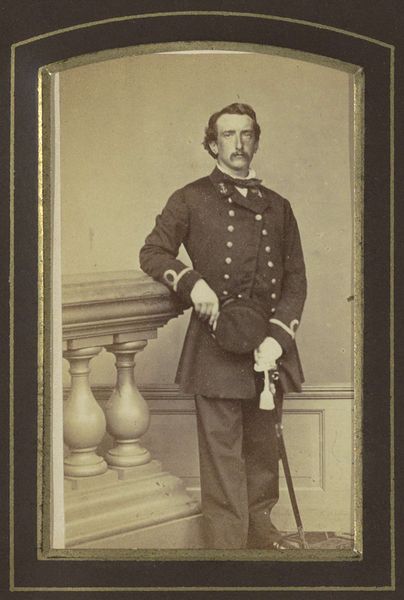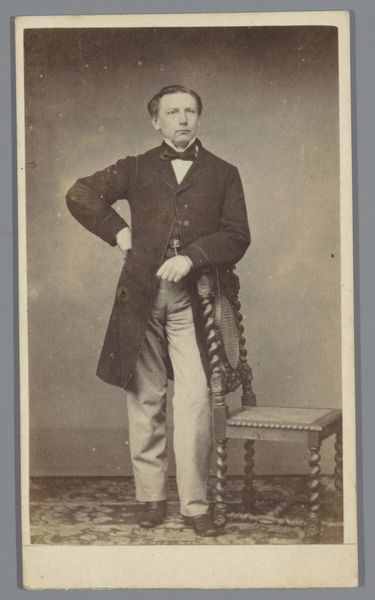
photography, gelatin-silver-print
#
portrait
#
archive photography
#
photography
#
historical photography
#
gelatin-silver-print
#
19th century
#
realism
Dimensions: image/sheet: 9.4 × 5.7 cm (3 11/16 × 2 1/4 in.) mount: 9.5 × 6.2 cm (3 3/4 × 2 7/16 in.)
Copyright: National Gallery of Art: CC0 1.0
Curator: This remarkable gelatin-silver print, simply titled "Frances Clayton," dates back to around 1865, and its attribution is given to Samuel Masury. It captures a single figure in uniform. My first impression? A stoic melancholy. There’s an almost palpable sense of weary resolve emanating from this individual. Editor: The gaze certainly draws you in. Note the hat’s ornamentation and its symbolism; also, observe the sword, partially obscured, which points towards traditional masculine representation but the image overall invites a disruption to our understanding of archetypal visual cues. Curator: Precisely! This image offers more than first meets the eye. The historical context reveals the subject of this photograph as none other than Frances Clayton, who, disguised as a man, served as a Union soldier during the American Civil War under the name Frank Clayton. It compels us to ask how many stories remain concealed beneath similar seemingly straightforward 19th-century portraits? Editor: Indeed, the muted tones and stark realism enhance this reading. This is no idealized hero. Consider, too, the detail of the decorative chair on the right – such a juxtaposition of domesticity and war. It almost emphasizes the fragility of the subject’s imposed masculinity. Curator: The symbolism of the chair provides a fascinating point; consider that even the stage for male performance requires support and stability that can be socially and materially acquired. Also, this reading aligns Clayton’s choice of performance through dress and physical presence as both radical, but also tactical. To be believable and passable is, in many instances, life-saving. Editor: Thank you; thinking along the lines of performativity in gender expression within a photographic tableau invites re-consideration. When considering its status as "archive photography," it becomes more poignant for me—it’s more than a captured likeness. It is an assertion. Curator: Ultimately, Masury's image prompts profound reflections on identity, performance, and the complexities of gender during wartime, complicating dominant historical narratives. Editor: This exploration expands our appreciation of the intertwined threads of the past and present and shows how the visual language speaks directly to cultural continuity and shared humanity.
Comments
No comments
Be the first to comment and join the conversation on the ultimate creative platform.
